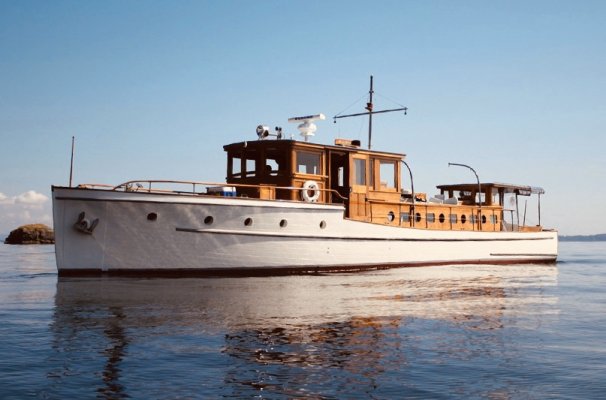TDunn
Guru
- Joined
- Feb 23, 2015
- Messages
- 889
- Location
- USA
- Vessel Name
- Tortuga
- Vessel Make
- Nunes Brothers Raised Deck Cruiser
The only good way to restore a wooden hull is to repair the existing hull with new wood. All I can say is go over every inch of the boat inside and out to assess its condition. ALL soft/rotted wood you find will have to be replaced. Planking stock should ideally be clear vertical grain wood. Depending on what wood was used for the original construction, that sort of planking stock can range from expensive to outrageously expensive. If you have reasonable wood working skills you can do the repairs yourself IF you have a place to do them. However, a 65 footer will be built from relatively large bits of wood (minimum 2" thick planking stock, etc.) which can be a bit of a chore to work with.
Beyond the wood, you need to find out how the planks are fastened. In other words (iron boat nails, galvanized boat nails, galvanized screws, bronze screws, copper rivets, etc.) and if the hull was ever refastened. If it has been refastened, you need to find out if the same material as the original fastenings was used. In the worst case you will need to completely refasten the hull below the waterline while removing ALL old fastenings so that the hull below the waterline has only one type of fastening. I suggest bronze wood screws. They will only cost you a couple of bucks each and you will only need 10,000 or so.
Restoring an old wooden boat can be a big job. If you do it yourself you can probably do a good job for under $100,000 exclusive of any work on the drive train. If you hire a restoration done the sky is the limit with a floor in the $500K range. After a complete restoration including rebuilding the engines the boat will be worth maybe $150K.
Just the thoughts of a guy who owns and maintains a 1936 wooden boat (see avatar pic).
Beyond the wood, you need to find out how the planks are fastened. In other words (iron boat nails, galvanized boat nails, galvanized screws, bronze screws, copper rivets, etc.) and if the hull was ever refastened. If it has been refastened, you need to find out if the same material as the original fastenings was used. In the worst case you will need to completely refasten the hull below the waterline while removing ALL old fastenings so that the hull below the waterline has only one type of fastening. I suggest bronze wood screws. They will only cost you a couple of bucks each and you will only need 10,000 or so.
Restoring an old wooden boat can be a big job. If you do it yourself you can probably do a good job for under $100,000 exclusive of any work on the drive train. If you hire a restoration done the sky is the limit with a floor in the $500K range. After a complete restoration including rebuilding the engines the boat will be worth maybe $150K.
Just the thoughts of a guy who owns and maintains a 1936 wooden boat (see avatar pic).

